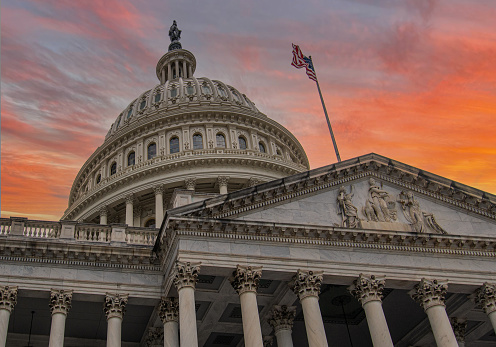(NewsNation) — President-elect Donald Trump pledged to eliminate the Department of Education and to return school choice to the states.
Under new proposed policies for his second term, Trump said he would remove “the radicals who have infiltrated the federal Department of Education, and get to Congress reaffirm the president’s ability to remove recalcitrant employees from the job.”
What is the Department of Education?
The federal agency, established in 1979, primarily oversees funding for K-12 public schools while also supporting college students. The majority of Department of Education funding goes to student financial aid.
Federal Student Aid, an office of the U.S. Department of Education, is the largest provider of student financial aid in the nation. FSA makes postsecondary education possible for more than 9.7 million students each year.
How elementary schools use DOE
Funding for elementary schools and secondary schools supports economically disadvantaged school systems, USA Facts reports.
Title I provides funding for children from low-income families. This funding is allocated to state and local education agencies based on Census poverty estimates.
Annual funding to state and local governments supports special education programs to meet the needs of children with disabilities at no cost to parents.
School improvement programs, which amount to nearly $6 billion each year, award grants to schools for initiatives to improve educational outcomes.
How higher education uses DOE
The DOE administers two programs to support low-income students attend college: Pell Grants and the federal student loan program, USA Facts reports.
Pell Grants provide assistance to college students based on their family’s ability to pay. The maximum amount for a student in the 2024-25 school year is $7,395. In a typical year, Pell Grant funding totals around $30 billion.
The federal student loan program subsidizes students by offering more generous loan terms than they would receive in the private loan market, including income-driven repayment plans, scheduled debt forgiveness, lower interest rates, and deferred payments.
Why does Trump want to abolish it?
Trump has accused the department of “indoctrinating young people with inappropriate racial, sexual, and political material.”
“Our schools must be totally refocused to prepare our children to succeed in the world of work,” Trump said in a September 2023 address.
In the early stages of the presidential race, Trump laid out 10 principles for his education policy plan.
What will happen to Title IX and transgender athletes?
Keeping men out of women’s sports has been a pillar of Trump’s and some other Republican lawmakers’ education policies.
Transgender athletes are in jeopardy of being able to play sports that are in line with their gender identity. For example, a transgender girl who wants to play on a girl’s softball team would be required to play boys’ baseball under Trump’s policies, which violates Title IX under its current directions.
Title IX is a federal law that prohibits sex-based discrimination in educational settings that receive federal funding.
Will student loans be forgiven under Trump?
Student loan forgiveness was not a focus of the Trump campaign, unlike Biden’s promise to cancel student loan repayment during his run for president.
Trump largely has not addressed this topic, but it’s possible that eliminating DOE may impact student loans.
Will Trump fully dismantle the department?
According to an American Enterprise Institute senior fellow, Trump is unlikely to fully dismantle the entire Department of Education.
Michelle Dimino, the director of Third Way’s Education program, says the repercussions of dismantling the Department of Education would be far-reaching and very alarming.
NewsNation’s Ashley Soriano contributed to this report.
